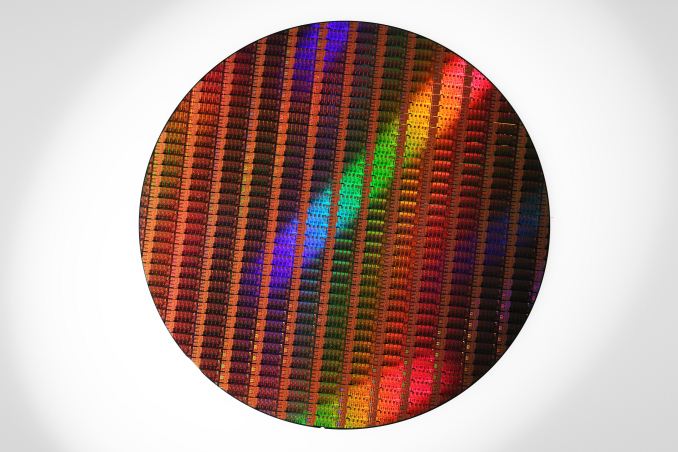The Haswell Review: Intel Core i7-4770K & i5-4670K Tested
by Anand Lal Shimpi on June 1, 2013 10:00 AM ESTFinal Words
I’m a fan of Haswell, even on the desktop. The performance gains over Ivy Bridge depend on workload, but in general you’re looking at low single digits to just under 20%. We saw great behavior in many of our FP heavy benchmarks as well as our Visual Studio compile test. If you’re upgrading from Sandy Bridge you can expect to see an average improvement just under 20%, while coming from an even older platform like Nehalem will yield closer to a 40% increase in performance at the same clocks. As always, annual upgrades are tough to justify although Haswell may be able to accomplish that in mobile.
Even on the desktop, idle power reductions are apparent both at the CPU level and at the platform level. Intel focused on reducing CPU power, and it seems like Intel's motherboard partners did the same as well. Under load Haswell can draw more power than Ivy Bridge but it typically makes up for it with better performance.
Overclockers may be disappointed at the fact that Haswell is really no more of an overclocker (on air) compared to Ivy Bridge. Given the more mobile focused nature of design, and an increased focus on eliminating wasted power, I don’t know that we’ll ever see a return to the heyday of overclocking.
If the fact that you can’t easily get tons of additional frequency headroom at marginal increase to CPU voltage is the only real downside to the platform, then I’d consider Haswell a success on the desktop. You get more performance and a better platform at roughly the same prices as Ivy Bridge a year ago. It’s not enough to convince folks who just bought a PC over the past year or two to upgrade again, but if you are upgrading from even a 3 year old machine the performance gains will be significant.











210 Comments
View All Comments
Nacho - Saturday, June 1, 2013 - link
Maybe it's time to upgrade my C2D E4300? :Pkrumme - Saturday, June 1, 2013 - link
Absolutely, go get a good ssd and this processor or IB, if its for desktop.Oscarcharliezulu - Monday, June 3, 2013 - link
Do it.Boissez - Saturday, June 1, 2013 - link
So my 2½ year old 2600K ($317) performs about the same as todays 4560K ($242). Color me underwhelmed.Meanwhile in mobileland we've went from 1 Ghz Tegra 2 to 2 Ghz Snapdragon S600 within the same timespan.
tential - Saturday, June 1, 2013 - link
Because for 99.9% of the population what's out there today is more than fast enough. Hell, the Core2Duo Conroe/Penryn processors are fast enough for most people today. I'm still using one in fact.On the mobile side however, we have tons of applications that could use more power. My galaxy S3 takes a little to load up some games, and while the data may have been downloaded to the phone through wifi, it still isn't on my screen yet.
I think it's pretty obvious why you see mobile land having to progress so fast while desktop processors are focusing on power consumption as the AVERAGE consumer (not people who are techies) would prefer smaller PCs and pushing more power efficient processors into smaller and smaller things like the intel NUC is what the consumer desires.
In short:
Your desires are the 1%. The 99% are being catered to.
klmccaughey - Monday, June 3, 2013 - link
@tential: Your last statement, maybe it should read "OUR desires are the 1%"? ;) I bet we would all be clapping right now if the 4770k was a big upgrade. Well, most of us, I think?jeffkibuule - Saturday, June 1, 2013 - link
Mobile is having the same performance renaissance that desktop chips had from 2004-2006 when we went from a hot, bloated Pentium 4 to a cool, efficient Core 2 Duo. And certainly we've had performance gains since then, but eventually the gains won't come so easily. You can start to see that a bit now with how the Exynos 5250 in the Nexus 10 is thermally throttled to 4W such that CPU and GPU can't be both running full tilt at the same time.Homeles - Saturday, June 1, 2013 - link
You're disappointed because your understanding of physics and Moore's Law is poorly developed. The scenario you've provided is a blatant false equivalency.According to your desperate desires, the roughly 4GHz processors that launched with Sandy Bridge should be running at twice the clock speed today.
When you understand that leakage power grows exponentially as transistor geometries shrink, and that power consumption raises exponentially as clock speed rises, you will realize that even the 10% gains that Haswell makes here are a big deal.
Dal Makhani - Saturday, June 1, 2013 - link
Homeles, I really appreciate your well said comment, im taking a business degree with an accounting major, but ive always loved building PC's as a hobby. When some of my computer science/engineer friends try to show me the stuff they are learning, i am baffled as its not my area of expertise. I can only imagine how challenging it is to combat the shrinking processes and make performance gains as you said. I have deep respect for Intel and AMD, always trying to utilize their research and engineers to try and make any gains for society. These forum people are just so ignorant sometimes and it baffles me.chizow - Saturday, June 1, 2013 - link
Hey, similar path as me. :) Don't worry about lack of understanding now, stick to it, keep reading great technical sites like AT, keep an open mind, and you'll get a really good grip on the industry, especially if you are an actual user/enthusiast of the products.